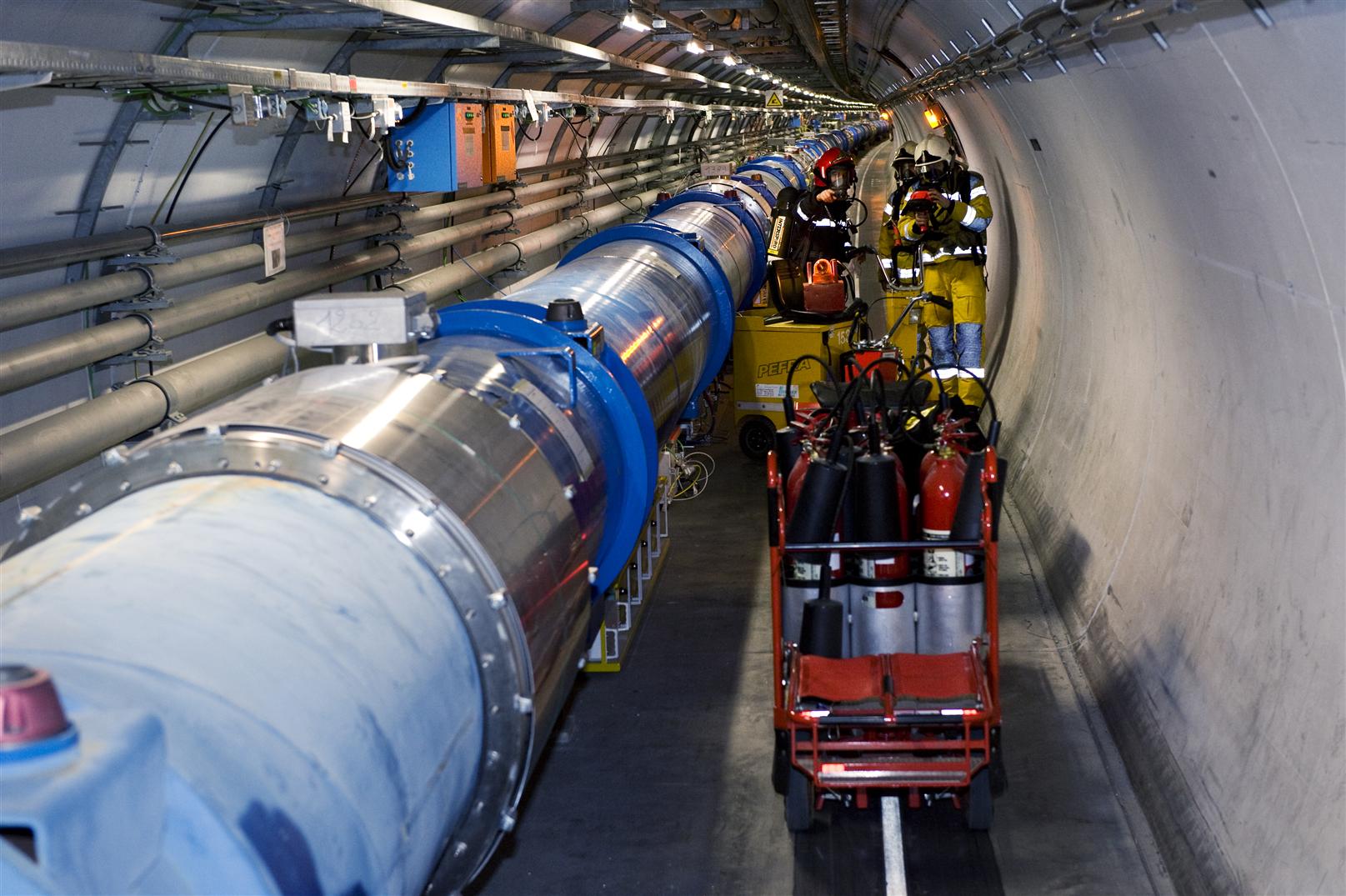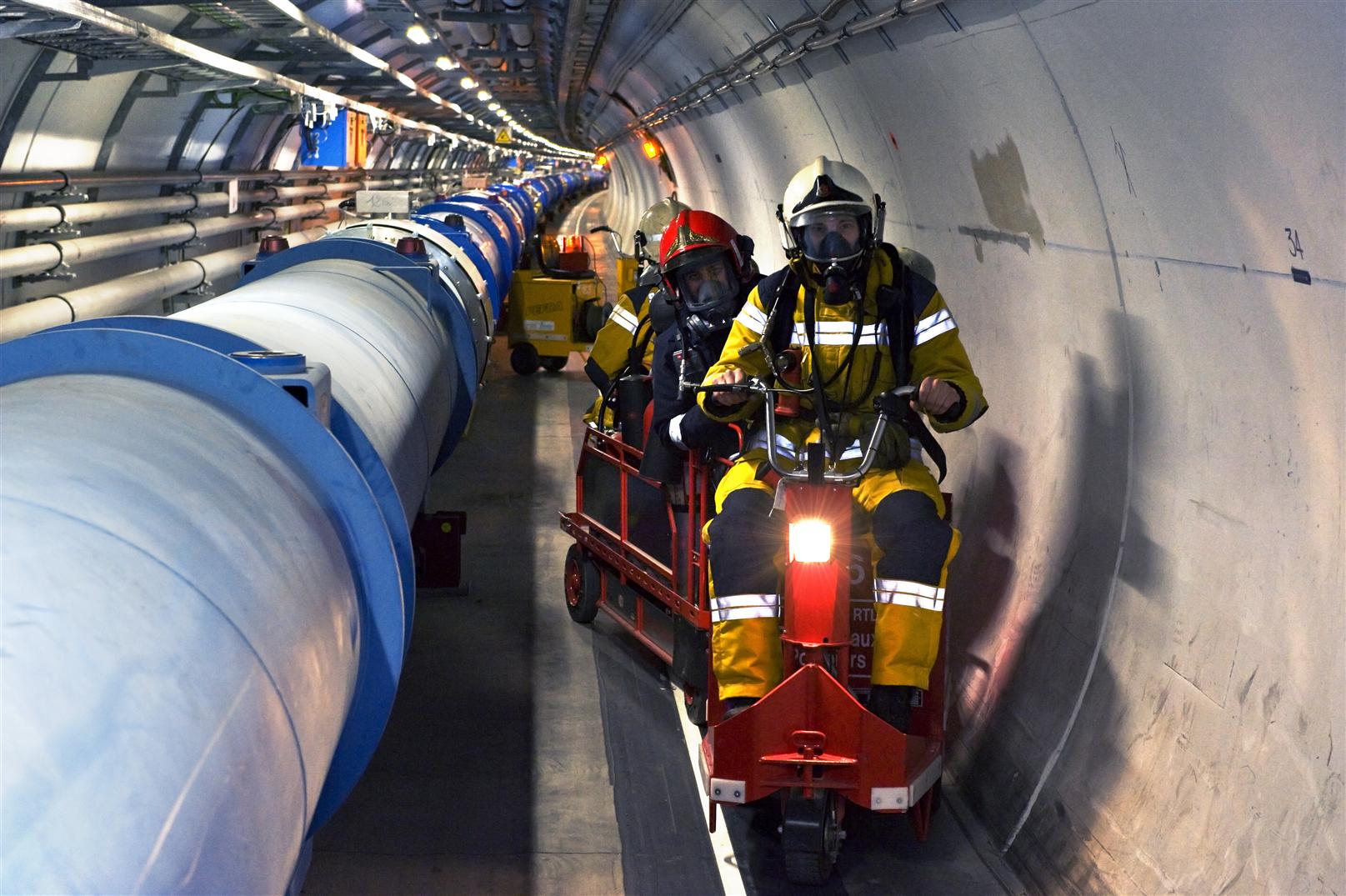A true-to-life fire alert in the LHC tunnel
Around 40 men from the fire brigades of CERN and the two Host States were put through their paces in an exercise with a scenario involving a fire between Points 6 and 7 of the LHC tunnel and the mysterious disappearance of a member of personnel.
Lowering the rescue equipment into the LHC tunnel and navigating through it in record time posed numerous challenges for the French, Swiss and CERN firemen.
It was all stations go in the CERN fire station at 9.00 a.m. on Thursday, 21 February. An automatic alarm and a call from a witness had alerted the fire brigade to a fire in the LHC tunnel between Points 6 and 7. The firemen were quickly at the scene and confirmed the presence of smoke at Point 7. Witnesses spoke of an electric truck that had gone up in flames, its driver missing. Unable to cover both LHC points at the same time, the CERN firemen called upon the French and Swiss fire brigades to help.
Although much less spectacular than the last such mock-up emergency exercise organised by the CERN fire brigade in September 2006, which was based on an explosion in the LHCb cavern with 20 accident victims (see Bulletin of 23 October 2006), this new exercise was a full-scale test of the efficiency of the organisation and command of an intervention involving three different brigades.
Met by the CERN firemen on the scene, the members of the Fire and Rescue Service (SDIS) of the Department of the Ain, the Fire and Rescue Service (SIS) of Geneva, and the Geneva police and the French Gendarmerie services had to coordinate their interventions, in record time, at two points of the tunnel simultaneously. "It’s a real challenge to coordinate the command of this type of operation", says Gérard Antoinet, one of CERN’s duty officers, who co-organised the exercise. It was not only a question of leading the intervention but also of ensuring good communication between rescue teams used to different intervention methods, both on the surface and underground.
An operational command post involving the fire chiefs of the Geneva, Ain and CERN fire services was established at the CERN fire station, while two mobile command posts were set up at Points 6 and 7 of the tunnel.
Numerous non-trivial material obstacles had to be overcome, not least of which was the management of communications. The two points of the tunnel are almost 3500 metres apart and the operational command post was even further than that from the two mobile command posts. An innovative e-mail communication system using WiFi-enabled laptops was therefore tried out and proved a success.
The coordination of rescue efforts was also complicated by the difference in radio frequencies used by the three services. Lowering the material and navigating through the tunnel represented further challenges, to which the CERN firemen are accustomed but which were completely unfamiliar to their counterparts from the French and Swiss fire services. The standard firemen’s gear (fire-fighting and rescue equipment) could not be taken through the access chambers. After putting their equipment onto trucks, the firemen had to open the reinforced doors and find their way through the maze of service tunnels and the main tunnel itself. "If we’d had to go in there without your guidance in a smoke-filled atmosphere, I’m not sure we’d have found our way out", admitted the members of the local French and Swiss fire services as they emerged from the tunnel at the end of the exercise.
But thanks to the combined efforts of all the fire services taking part, the exercise was ultimately a success. The fire was quickly brought under control and the driver, who was suffering from mild shock, was found safe and sound.
"The exercise showed us our strengths but also the areas we still need to work on. I’m very proud of the motivation and professionalism of the CERN firemen both on the scene of the incident and in the command and communication posts. The channels for three-way collaboration with the local French and Swiss fire services are open and we simply need to keep them open in the future by organising further exercises of this kind", said Ernst-Peter Doebbeling, Head of the CERN fire brigade.



